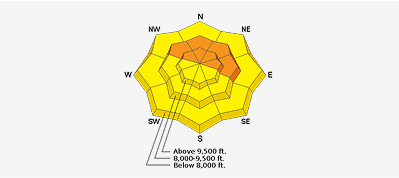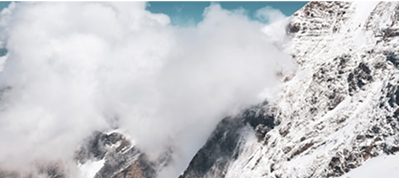You can find a wide range or snow depths on the North Slope. In general, areas with snow depths about 1.5 meters have fairly strong snow and the facets have healed a little bit. Areas with thinner snow are weaker. Think about where you'd expect to hit rocks with your sled. These are also areas where avalanches will be most likely once we get more snow and more wind loading.
Below is a pit from an area with deeper snow. However, a little further uphill of us, the snow depths appeared to be shallower - thus the snowpack was likely weaker. Notice the temperature profile. Temperature gradients in the upper snowpack are steep enough for faceting. As you go deeper in the snowpack the temperature gradient lessens. The take-home point is that these deeper snowpacks have insulated the buried facets which are very slowly healing. Shallower snowpacks still have a strong temperature gradient that will either prevent strengthening or possible further weaken the buried facets.


We went to Moffit Peak and found more snow about 1.5m deep. Then we went to Double Hill looking for shallower and weaker snow. A large part of Double hill had avalanched and has very thin weak snow. Below is a snowpit profile and a photo of that pit.


The photo below is an area just 20 feet south that had only 2 feet of snow. It is weaker and representative of much of Double Hill.







